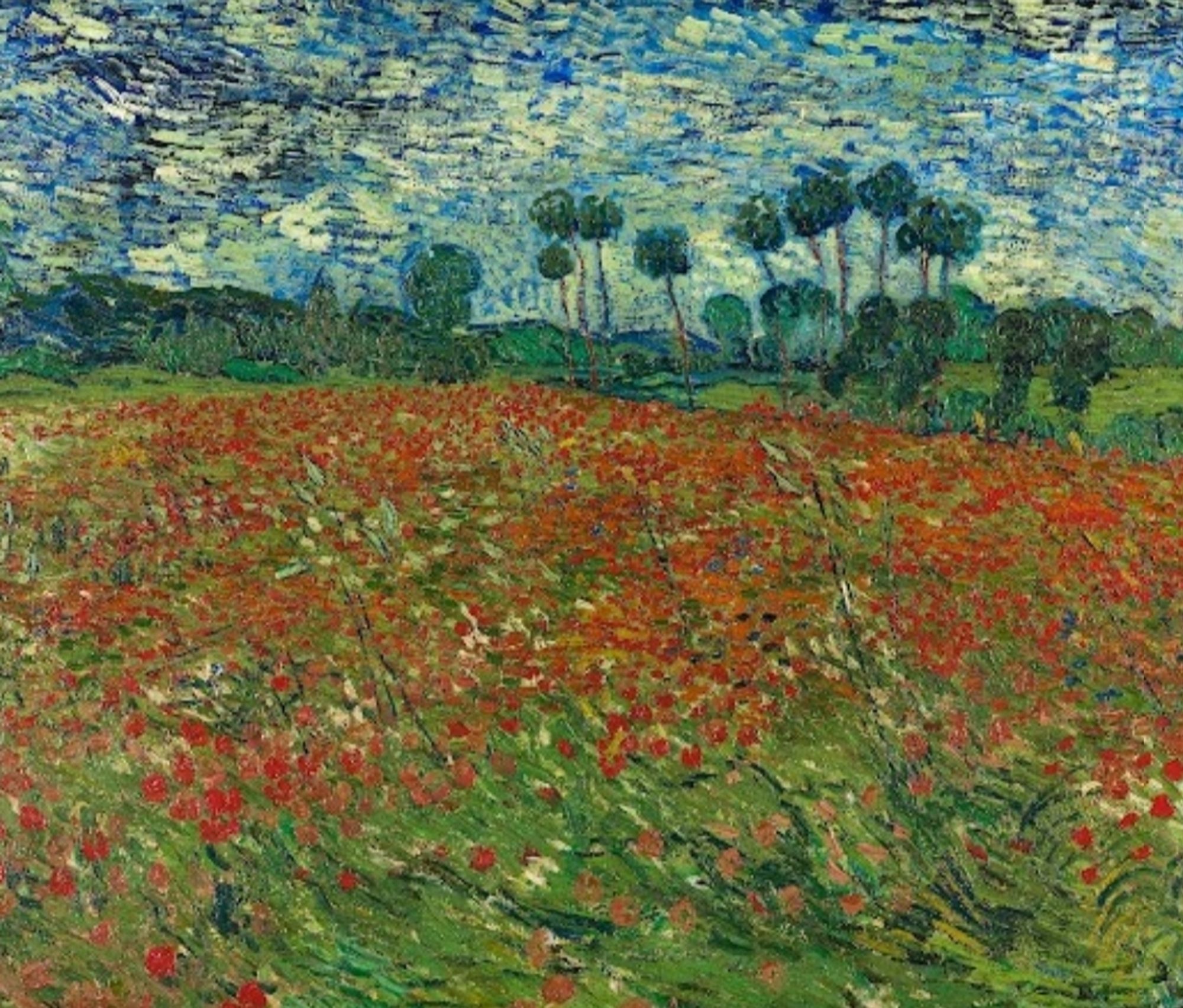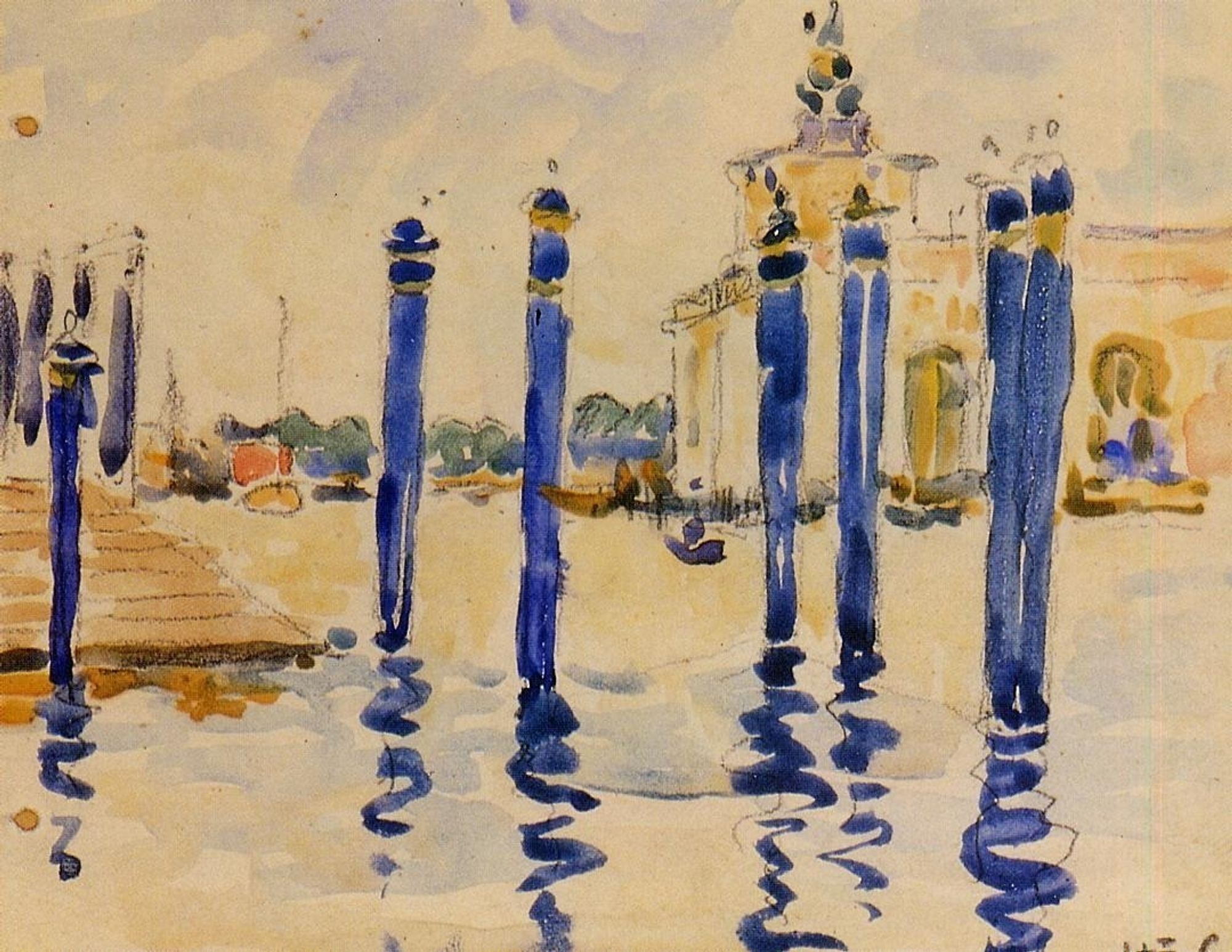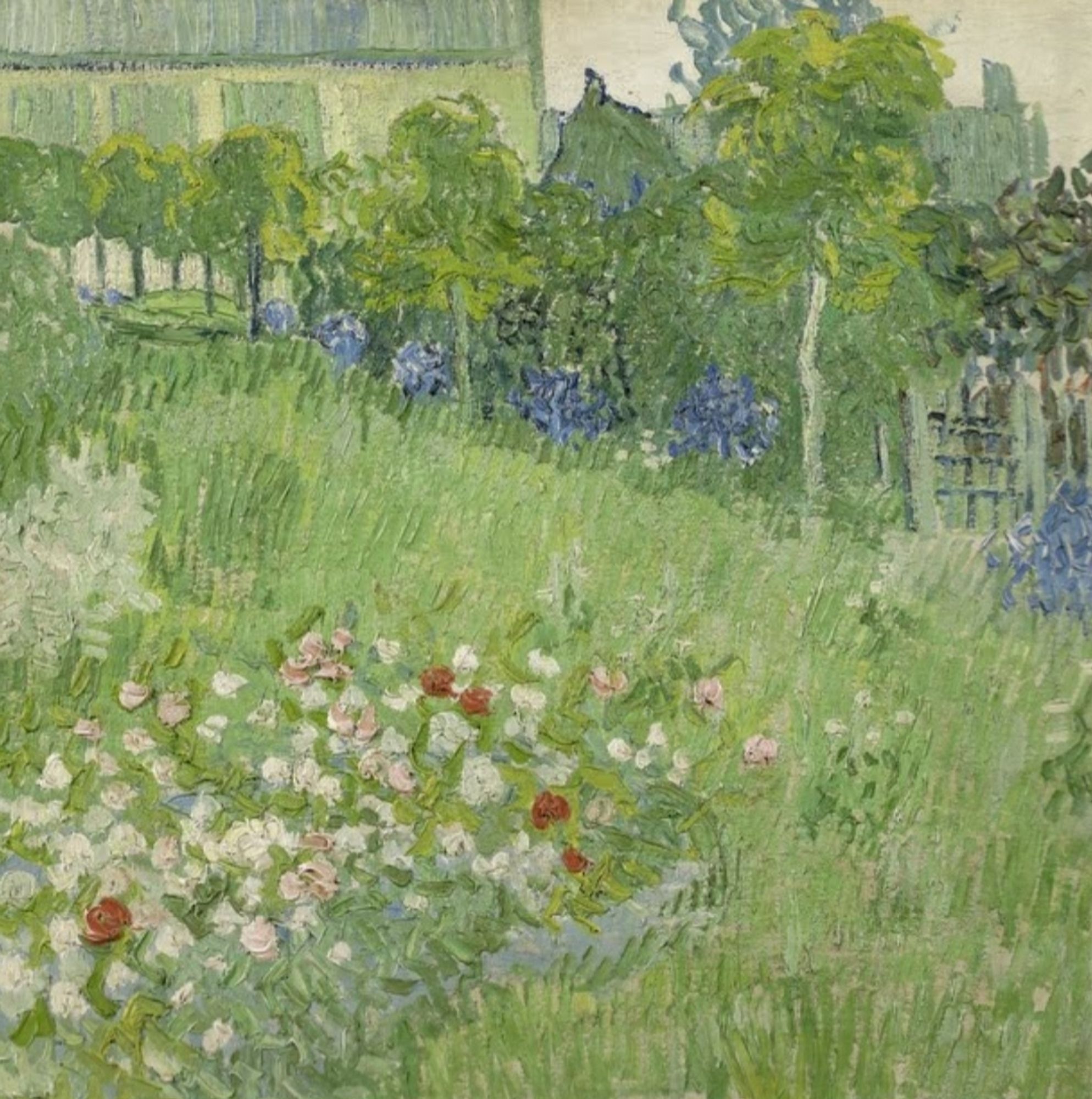Poppy Field by Vincent van Gogh, June 1890, Kunstmuseum (Der Haag. Netherlands) #Art#ModernArt#PostImpressionism More in alt text

Untitled [Skedans, Queen Charlotte Islands] by Emily Carr c. 1912, Royal BC Museum (Victoria, Canada) #Art#ModernArt#PostImpressionism

La Donana, Venice by Henri-Edmond Cross, 1903, Private Collection #Art#ModernArt#PostImpressionism More in alt text

Harvest at La Crau, with Montmajour in the Background by Vincent van Gogh, 1888, Van Gogh Museum (Amsterdam, Netherlands) #Art#ModernArt#PostImpressionism

Still Life with Flowers and Fruit by Paul Cézanne, c. 1890, Alte Nationalgalerie, Staatliche Museen zu Berlin (Berlin, Germany) #Art#ModernArt#PostImpressionism More in alt text

Daubigny's Garden by Vincent van Gogh, June 1890, Van Gogh Museum (Amsterdam, Netherlands) #Art#ModernArt#PostImpressionism More in alt text

Les bateaux amarrés (Quay with Men Unloading Sand Barges) by Vincent van Gogh, 1888, Museum Folkwang (Essen, Germany) #Art#ModernArt#PostImpressionism More in alt text
![Van Gogh painted this oil study in the summer of 1888 in Arles. In a letter to his brother Theo, he described the motif, which he had previously captured in a drawing: "At the moment I am working on a study [..] boats, seen from a quay, from above. The two boats are purplish pink, the water is very green, no sky, a tricolor flag on the mast. A workman with a wheelbarrow is unloading sand. I have a drawing of it too." Specifically, the scene is situated on the landing place on the left bank of the Rhone not far from the Place Lamartine, just a few steps away from van Gogh's studio at the time. The filigree depiction of the boats and their loads, the landing stage, the rudder and the masts give the impression of a rocking, unsteady plane over the and the masts give the impression of a rocking, unsteady plane over the water which supports the massively reinforced bank and the heavy chain.](https://cdn.bsky.app/img/feed_fullsize/plain/did:plc:gtvblttitvvita57xiqahrvh/bafkreibrejwcrmvvyr62axmf6mctp3y3cd5bbajkbic5rc3uwvrsqmmei4@jpeg)


